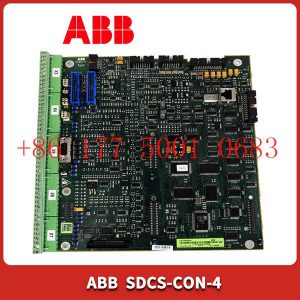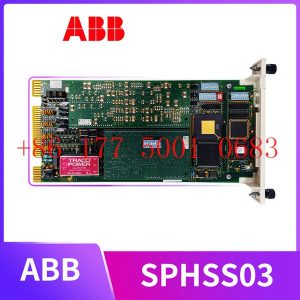Description
hardware flow control. It is an ideal choice in the field of industrial automation.
Human-machine collaborative robot technology from seven major companies including ABB and SIASUN
Human-machine collaborative robot is a new type of robot that can work directly side by side with humans without
the need for isolation by safety fences. Human-machine collaborative robots are expected to fill the
gap between fully manual assembly lines and fully automated
production lines. In the past, people often talked about robots replacing human labor, but now robots are considered more
of auxiliary tools. The rigid boundaries between automation and manual labor are gradually being dissolved. Efficient sensors,
intelligent control technology
and the most advanced software technology are integrated on the robot to ensure that humans and robots can cooperate safely
without guardrails and can be flexibly applied without limiting locations and tasks. With this approach, employees can use the required number of
robots at different production locations and for different purposes depending on the required piece quantity.
Advantage
Such sensitive robots can therefore be used, for example, as flexible production assistants in manufacturing and
relieve employees by taking on manual work steps that previously could not be automated and were not ergonomically
correct. For example, by taking on overhead tasks or lifting heavy objects, the burden on employees can be significantly
reduced. Repeatable processes can be carried out with extremely high quality without the need for investments based on type or workpiece.
Representative product introduction
1.ABB’s first human-machine collaborative robot YuMi
abb”s first human-machine collaborative robot, the 14-axis robot YuMi, was announced by UL (Underwriters Laboratories)
on September 22, 2015 to have obtained UL safety certification, highlighting its key safety design with human-machine
collaboration capabilities. UL stated that ABB”s first dual-arm industrial robot YuMi that emphasizes human-machine
collaboration has obtained the robot safety certification from UL. This not only brings indexical significance to the unit robot”s
move towards human-machine interaction, but also ignites industrial momentum and provides support for the sustainable development and
development of the robot industry. Popularize the use of injectable cardiotonic injections.
Tang Jiade, general manager of UL Taiwan, said, “The certification process for robots with human-machine collaboration
and multiple axes is complicated. Taking YuMi”s 14-axis arms as an example, there are 14 degrees of freedom for translation
and rotation. Combining them produces more With
fast movements, UL relies on its professional experience in safety to simulate various failure scenarios for evaluation based on
different applications of robots to ensure that the robot can not only interact smoothly with people, but also interact smoothly with people in every
situation. Be able to self-detect and maintain safety and reliability.”
Cai Jingchun, associate director of ABB Taiwan”s industrial robot department, said, “ANSI/UL1740 robot and
automation equipment standard is not only a commercial standard, but also a national standard recognized by the
American National Standards Institute (ANSI). It has been certified by UL with global credibility, symbolizing YuMi”s Safety
design has been rigorously and
objectively evaluated and tested, and can lead the global industry to truly enter Industry 4.0/advanced manufacturing.”
2. Universal Robots’ flexible and safe full range of collaborative robot families
Universal Robots is a pioneer in a new segment of collaborative robots that focuses on user operability
and flexibility. At the Shanghai International Automobile Manufacturing and Assembly Exhibition from August 26 to 28, 2015
, Universal Robots” full range of collaborative robot families were unveiled.
The “human-robot collaboration” function of UR robots allows employees to work safely and closely with robots. The unique force sensing
allows it to automatically limit the amount of force generated during contact once it collides with a person. For example, the
default force sensing upper limit is set to a force of 150 Newtons. That is, once a person comes into contact with the
robot and a force of 150 Newtons is generated, the UR robot will automatically stop working. But it can also be adjusted
to automatically stop working once it encounters a force as low as 50 Newtons on the working path. In addition, the
UR robot has an intuitive user programming interface, and the robot movement direction can be controlled by clicking the
arrows on the touch panel. For workers, simple installation, debugging, and programming can be completed without
professional technical background or professional programming experience. These unique advantages have made UR
robots favored by many automobile manufacturers around the world.
Universal Robots currently has three collaborative robots – UR3, UR5 and UR10. The newly launched UR3 in March
2015 is the most flexible and lightweight desktop robot on the
market today that can work side by side with workers. It weighs only 11 kilograms, but has a payload of up to 3 kilograms.
All wrist joints can rotate 360 degrees, and the end joints can rotate infinitely. UR5 has a dead
weight of 18 kg, a payload of up to 5 kg, and a working
radius of 85 cm. UR10 can carry 10 kg and has a working radius of 130cm. All three robots are renowned in the industry
for their ease of programming, collaboration, safety and reliability when working with people.
It is reported that the UR robot also has an intuitive user programming interface, and you can control the robot”s
movement direction by clicking the arrows on the touch panel.
3. FANUC collaborative robot CR-35iA with the largest payload
The maximum load on the wrist of the CR-35iA robot reaches 35kg, and the movement radius can reach
1813mm. As a collaborative robot, the complete safety functions allow the CR-35iA to work in the same space
with people without isolation by safety fences. The excellent design also enabled the CR-35iA to win the Industrial
Design Gold Award at this year’s Industry Expo, which was personally awarded by Vice Premier Ma Kai of the State Council.
Excitation system ABB module NKLM01-4
Excitation system ABB module NKEB02
Excitation system ABB module NKEB01
Excitation system ABB module NKDS01-100
Excitation system ABB module NKDO01-5
Excitation system ABB module NKDO01-2
Excitation system ABB module NKCS01-10
Excitation system ABB module NKCL01-7
Excitation system ABB module NKCL01-6
Excitation system ABB module NKCL01-33
Excitation system ABB module NKCL01-20
Excitation system ABB module NKCL01-10
Excitation system ABB module NKAS11-15
Excitation system ABB module NKAS11-12
Excitation system ABB module NKAS01-9
Excitation system ABB module NKAS01-8
Excitation system ABB module NKAS01-15
Excitation system ABB module NKAS01-13
Excitation system ABB module NKAS01-12
Excitation system ABB module NKAS01-11
Excitation system ABB module NKAS01-10
Excitation system ABB module NIS21
Excitation system ABB module NIRL03
Excitation system ABB module NIRL01
Excitation system ABB module NIPL01
Excitation system ABB module NIOX01
Excitation system ABB module NIOP02
Excitation system ABB module NINT-64
Excitation system ABB module NIMP02
Excitation system ABB module NIMP01
Excitation system ABB module NIMP01
Excitation system ABB module NIMP01
Excitation system ABB module NIMF02
Excitation system ABB module NIMF01
Excitation system ABB module NIDS01
Excitation system ABB module NIDO01
Excitation system ABB module NIDI01
Excitation system ABB module NICS01
Excitation system ABB module NICL01
Excitation system ABB module NIAO01
Excitation system ABB module NIAM02
Excitation system ABB module NIAM01
Excitation system ABB module NIAI05
Excitation system ABB module NIAI04
Excitation system ABB module NIAI03
Excitation system ABB module NIAI02
Excitation system ABB module NIAI01
Excitation system ABB module NIA001
Excitation system ABB module NHSS01
Excitation system ABB module NGCM02
Excitation system ABB module NGCM01
Excitation system ABB module NFTP01
Excitation system ABB module NFTP01
Excitation system ABB module NFCS01
Excitation system ABB module NFBA01
Excitation system ABB module NFAN02
Excitation system ABB module NFAN01
Excitation system ABB module NF93A-2
Excitation system ABB module Nextmove E100
Excitation system ABB module NE870 3BSE080239R1
Excitation system ABB module NDSO04
Excitation system ABB module NDSO03
Excitation system ABB module NDSO02
Excitation system ABB module NDSO01
Excitation system ABB module NDSM05
Excitation system ABB module NDSM04
Excitation system ABB module NDSM03
Excitation system ABB module NDSM02
Excitation system ABB module NDSM01
Excitation system ABB module NDSI02
Excitation system ABB module NDSI01
Excitation system ABB module NDLS03
Excitation system ABB module NDLS02
Excitation system ABB module NDLS01
Excitation system ABB module NDIS01







Reviews
There are no reviews yet.